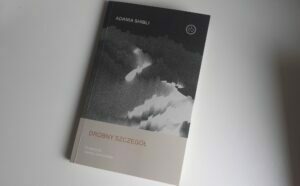Indigenous people of Canada are mourning the deaths of 215 children whose remains have been discovered on site of the former Kamloops Indian Residential School
On Tuesday, May 27 Rosanne Casimir, the leader of the Tk’emlúps te Secwépemc Indigenous group confirmed the discovery of the remains of 215 Indigenous children, on site of the biggest school operating within the Canadian residential school system. She called this “an unthinkable loss that was spoken about but never documented”. Indigenous communities throughout Canada are performing rituals commemorating the deaths of these children, whose identity is yet to be investigated.
Children who never came back from school
In 2019 Joanna Gierak-Onoszko published a reportage “27 śmierci Toby’ego Obeda” (“The 27 deaths of Toby Obed”), in which she describes the system of obligatory sending Indigenous children to residential schools and the harms that over 150 thousand children experienced in these institutions, scattered across Canada.
Such schools were opened in places secluded from the local community, which were difficult to reach. It was also difficult to escape from them. They were operated by both lay people and by the representatives of many different Christian denominations: Roman Catholic, Anglican and Presbyterian.
In the book, among shocking descriptions of physical, psychological and emotional abuse of children aged three to sixteen, there are also testimonies of numerous, undocumented deaths of students. The discovery in Kamloops can illustrate the scale of this atrocity.
One of the activities that has been undertaken by the community of Indigenous people, represented by Rosanne Casimir, is notifying the families and local communities from which students of the Kamloops Indian Residential School came about the progress of works. For them it might be the first formal confirmation of the death of a child who never came back home from school.
Trauma for life
Danielle Morrison, a lawyer from Anishinaabe indiginous group, stresses that residential schools were created to assimilate Indigenous people of Canada and to “get rid of the Indian problem”.
In 2008, with the launching of the Truth and Reconciliation Commission (TRC), Canada entered the official path of settling up and compensating for losses. The Commission completed its work in 2015 by releasing 94 calls for action, specifically for reconciliation between Canadians and Indigenous people, as well as a report in many volumes, gathering the survivors’ testimonies and proof of the damages done to them.
A groundbreaking effect of the Commission’s works was calling the system of residential schools cultural genocide against the Indigenous communities. The activity of the Commission was overtaken by the National Center for Truth and Reconciliation, operating at the University of Manitoba. It collects and prepares further documents about this shameful part of the history of Canada.
Armenian genocide. We learn the horrible truth from those who survive. Read more >>>
Despite the actions mentioned above and the apologies issued in 2017 by Canadian Prime Minister, Justin Trudeau, for the damages done to Indigenous people by the Canadian residential school system, the Indigenous community is still in deep trauma because of the unaccounted harms. Many members suffer from numerous illnesses, are susceptible to addictions and have difficulties with building healthy relationships.
Dealing with trauma is even more difficult since many Indidenous people do not trust the government and its solutions. It is characteristic that in order to obtain a confirmation of the suffered damages and some compensation, the survivors from residential schools have to sue the federal government and the access to documentation of the long- closed residential schools is often made difficult or even impossible due to destruction.
Who is speaking about Indigenous people
One of the examples of inclusive narrative, including the history of Indigenous people into the mainstream of Canadian culture, is the latest film adaptation of the classic novel by L.M. Montgomery “Anne of Green Gables”, which can be watched on Netflix under the title “Anne with an e”. Although it is difficult to find such a deep concern for the Indigenous communities of Prince Edward Island in Montgomery’s original works, the creator of this series, Moira Walley-Beckett, invited a screenwriter and film director Tracey Deer from the Mohawk Indigenous group to work on the third season of this show.
The result of this cooperation is friendship between Anne Shirley and Ka’twet’s, a member of the Mi’kmaq Indigenous group, who was sent to one of the residential schools. Despite the fact that the creators’ engagement into portraying the realia of Mi’kmaq’s life was perceived very positively by the series’ fans (including those from Indigenous communities), the show has been cancelled after the third season and the problem of Ka’twet’s, subjected to the horrible conditions of a residential school, has not been solved.
What remains is to hope that the new productions, presenting the issue of tragic governmental actions resulting from racism, xenophobia and eurocentrism will keep appearing on our screens and shelves more and more frequently. And that they will also talk about other places, for example Australia and its Stolen Generation, thus broadening our knowledge about the dark sides of colonialism.
Maybe with the next steps of naming and compensating for the damages done to the victims of white colonizers we will learn how to talk about them and how to give testimony, creating a better world for future generations.
Julita Dudziak – graduated international relations and Far Eastern cultural studies at the Jagiellonian University in Krakow. Member of the Salam Lab team.
Translated by Maja Tkocz – English philology student, interested in translation and teaching English to students with special educational needs. In her free time she crochets. Volunteer at the Salam Lab.
Title photo: Kamloops Indian Residential School. Credit: Province of British Columbia via flickr.com.



